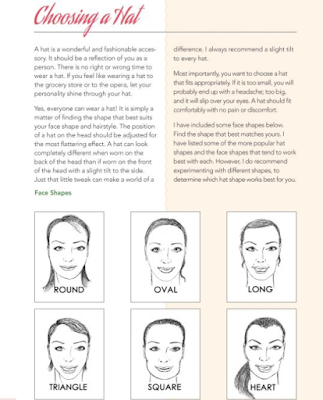I was recently offered a copy of, The Making of a Milliner: Hat-Making Projects. This book will seem a little off of the topic of knitting. However, most of the hats I have knit have been heavily influenced by the millinery class I took years ago. Here's an example of a classic pill box style trimmed with a loop stitch to emulate a fur band. I also own a large collection of my own purchased hats.
 |
| https://www.ravelry.com/patterns/library/fur-trimmed-pillbox-hat-2 |
I've always used the classes I took on topics other than knitting as an influence on my own work. They often shifted how I approached construction, fit and embellishment from what other knitters were doing.
The author, Jenny Pfanenstiel owns her own company Formé Millinery. She has a celebrity following, having designed hats for Oprah Winfrey, Michelle Obama, and Barbara Corcoran. Jenny's work has been featured in Vogue, Tatler, Country Living, Vigore, and Belle Armoire. She is the winner of the 2012 FGI Rising Star and both the 2009 and 2012 Hatty Awards.
The book provides a great introduction if you are interested in the construction of different styles of hats. It's full of colour tutorials that explain the basics. Even if you don't want to make your own hats there are sections in the book which will be of use to any hat wearer.
Many wooden blocks are used in the shaping of hats which is something that non hat makers are surprised by. If you are a knitter of hats you have probably used bowls or plates in the blocking process. Note that milliners also use the term blocking in shaping their projects.
There are sections on how to take measurements and how to choose flattering styles. The seven designs include a cloche, a cowboy, and a straw-brimmed hats, as well as several fascinators.There are detailed photos in each tutorial so you will see the process for both wool felts and straw hats which are blocked into shape.
You will also learn how to make hatpins, apply ribbons and work with feathers. I have found these skills very handy over the years to customize purchased hats.
I especially enjoyed the Fun Facts scattered through the book providing a little bit of the history of millinery.
The book provides supply lists which are very useful as the tools for millinery work can be hard to come by.
Here's a few more of my knitted hat designs to help you see how understanding millinery technique can relate back to your knitting.
 |
| https://www.ravelry.com/patterns/library/the-scottish-tam |
 |
| https://www.ravelry.com/patterns/library/the-scottish-tam |
 |
| https://www.ravelry.com/patterns/library/the-flowered-topper |
 |
| https://www.ravelry.com/patterns/library/the-flowered-topper |
 |
| https://www.ravelry.com/patterns/library/the-breton-hat |













No comments:
Post a Comment